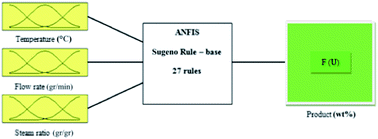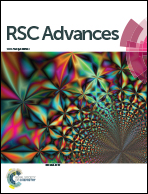A novel application of a neuro–fuzzy computational technique in modeling of thermal cracking of heavy feedstock to light olefin
Abstract
In the present paper, the ability and accuracy of an Adaptive Neuro–Fuzzy Inference System (ANFIS) was investigated for the process evaluation of thermal cracking to light olefin. The main objective of this research is to predict product yields as a function of Coil Outlet Temperature (COT), steam ratio, and feed flow rate, at the reactor tube outlet. Temperature, flow rate and steam-to-hydrocarbon ratio were in the range of 1023–1173 K, 3–7 g g−1, and 0.5–1.4 g min−1, respectively. The Adaptive Network-Based Fuzzy Inference System (ANFIS) technique was trained using historical data to generate the membership functions and rules that best interpret the input/output relationships of the process. Four fuzzy inference systems were independently developed for four output parameters, each of which consisted of three inputs and 27 rules. In order to better understand the capability of the present technique, an extensive comparison test was applied to the ANFIS, kinetic modeling, and response surface methodology. The obtained results demonstrate that these three models are in good agreement with the experimental data. The NF model showed the best results of all.


 Please wait while we load your content...
Please wait while we load your content...